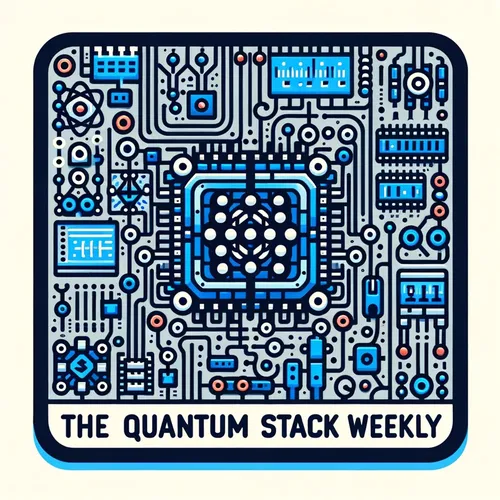Caltech's Quantum Memory Breakthrough: Harmonizing Sound and Silence
- Author
- Quiet. Please
- Published
- Sun 31 Aug 2025
- Episode Link
- https://www.spreaker.com/episode/caltech-s-quantum-memory-breakthrough-harmonizing-sound-and-silence--67571854
This is your The Quantum Stack Weekly podcast.
Stop for a moment. Imagine the vibration in the air right after a thunderclap—simultaneous chaos and order. That’s the feeling in the quantum labs this week after Caltech announced an audacious quantum memory breakthrough just yesterday.
I’m Leo, Learning Enhanced Operator, and today on The Quantum Stack Weekly, I’m stepping straight into the swirling core of this headline experiment—a narrative where sound becomes memory, and the quantum frontier takes another leap.
Picture a chip cooled to near absolute zero. It’s so cold, you can almost hear the absence of molecules moving, that profound hush before the action. Scientists at Caltech, led by Oskar Painter and Hamed Mirhosseini, have crafted a device where quantum information is stored not as fleeting electrical signals, but as mechanical vibrations—tiny sound waves called phonons—inside a micro-engineered “tuning fork.” This is quantum memory made tangible, a shimmering bridge between harmony and entropy.
Why does this matter? Here’s the quantum twist: for quantum computers to outperform classical giants, they need ways to store quantum states long enough for complex operations and error correction. Conventional superconducting quantum bits—our everyday workhorses—lose their quantum secrets astonishingly fast, on the scale of microseconds or a few milliseconds at best. But Caltech’s new quantum memory lasts thirty times longer, holding onto entangled quantum data well after other devices would surrender it to environmental noise. That’s not just incremental—it’s seismic.
Let’s dramatize the experiment, just for a breath: a superconducting qubit, the ultra-sensitive nerve cell of a quantum computer, passes its quantum state onto a tiny mechanical resonator—think of it as a miniature bell tuned precisely to gigahertz frequencies. While humans hear at hertz and kilohertz, these bells ring a million times faster, and at temperatures so frigid the whole device is swimming in quantum silence. Through exquisitely tuned electromagnetic pulses, information enters as an excitation in this quantum bell and lingers, protected, before being called upon again for operations downstream.
The impact? With this resilient storage, quantum chips could soon be networked like classical RAM modules—persistence meets flexibility. Imagine quantum web servers that keep secrets alive for long-distance entanglement or processors that juggle quantum information through many steps without stumbling. In effect, this brings us closer to error-corrected, scalable quantum computing—addressing a fundamental bottleneck in the field.
This advance didn’t spring up in isolation: it echoes across disciplines, merging nanomechanics with superconducting circuit design, and pulling inspiration from both quantum acoustics and classical memory hierarchies. It’s like watching disparate weather systems collide, spawning innovation storms.
As I reflect, I see Caltech’s quantum memory as a harbinger. Like keeping a fragment of a melody safe in a noisy concert hall, we’re learning how to pause, remember, and then resume the dance at quantum speed.
Thanks for tuning in today. If you have questions or want topics explored on air, email me at [email protected]. Don’t forget to subscribe to The Quantum Stack Weekly. This has been a Quiet Please Production. For more, visit quiet please dot AI.
For more http://www.quietplease.ai
Get the best deals https://amzn.to/3ODvOta
